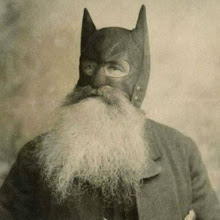Textures

Tourists clog sidewalks, stare up at the skyline. Natives clog sidewalks, stare down at their phones.
At least tourists soak in the scenery. Natives are lost in pixels, mesmerized by corporate toys. Fish on hooks show more life.
Walking through lower Manhattan, sunny windy day, I passed several outdoor cafes. Kids at tables saying nothing. Everyone texted or checked email. Were they talking to each other through their toys? Or chatting with others far away? Whatever the case, they rarely looked up. Thumbs twitching. Faces blank.
Younger friends say I'm a reactionary fuck. Get with the program, pops. This is how it is today. They're right to call me out. I welcome it. I'm decidedly retro, embarrassingly so. But what is their alternative? Where does this text-tit sucking land? Are they bending corporate tools to express something uniquely theirs? Or are they docile consumers dazed by brands?
I know there are kids who talk to each other with their mouths. Who make steady eye contact. Who discuss ideas and desires without checking email every thirty seconds. But I rarely see them. I place my aging faith in spoken word undergrounds. Arab uprisings show the way. They use technology to undermine official narratives. To offer mutual support. To tell the world that they mean business. Smart/iPhones and laptops convey solidarity and resistance. Swords into plowshares is no marketed app.
Ah, romantic me. Still thinking there's a domestic out. I've never seen American culture so locked in. So derivative. Repetitive. Madison offered a brief taste of something better; but like Seattle '99, it has faded into the cacophony. It'll take many Madisons to ripple the national surface. And even then statist reaction will be punishing. It's almost as if they're daring us to use their tools against them. Judging from the general quiet, our owners have made a sure bet.
Gallery hopped with some friends Thursday night. Amid so much tameness and unoriginality (Pollock-like drips? Seriously?) stood a few striking images and concepts.
I was drawn to Ed Ruscha's photographs at the Yancey Richardson Gallery. His Gasoline Stations 1962-89 are time capsules for a long-dead America. Full service stations along two-lane highways. Detroit's imperial car-boats under Fina and TraveLodge signs. Sun beating down in the middle of nowhere. People unhurried, casual. An ancient pace. I'm old enough to remember that world, but young enough to appreciate faster times. Lined against each other, Ruscha's photos at first appear redundant. Get close. Sink in. Ghosts spring to life.
On to crowded Sikkema Jenkins & Co. There was much about Kara Walker's Dust Jackets for the Niggerati- and Supporting Dissertations I liked, drawings of subjugation, acceptance of assigned roles, acknowledged pain. An acquaintance balked at Walker's texts. "At least they're hand-printed on paper," I said. "Not the current bullshit version." She grinned, brushed me aside. Pseudo-Luddite charm goes only so far.
At Agora Gallery I discovered Jose A. Gallego. The brother spoke to me. His depictions of isolation and loneliness, based on images by Dali, Hopper and Caravaggio, are arresting. Jacques-Louis David - The Death of Marat (seen above), captures my writing conditions of late. Notebook and pen on the floor. Me slabbed out wherever. Replace the needles with beer bottles and blunts, and it's pretty much the same. But what really grabbed me was this piece, Place 0003.

I know this building from numerous dreams. Either I'm living there or trying to find an exit. Walls near collapse. Floors giving way. Strangers huddled in hallways. Many times I meet a woman who seems familiar, her face fluctuating in dream shadow. I go down on her, soft moans rising until I'm thrown down a peeling stairwell. Frustration. Regret. I wander dark corridors in search of her, finding nothing but dead ends. My sole escape is waking up in a sweat.
If only there was a dream GPS.


<< Home